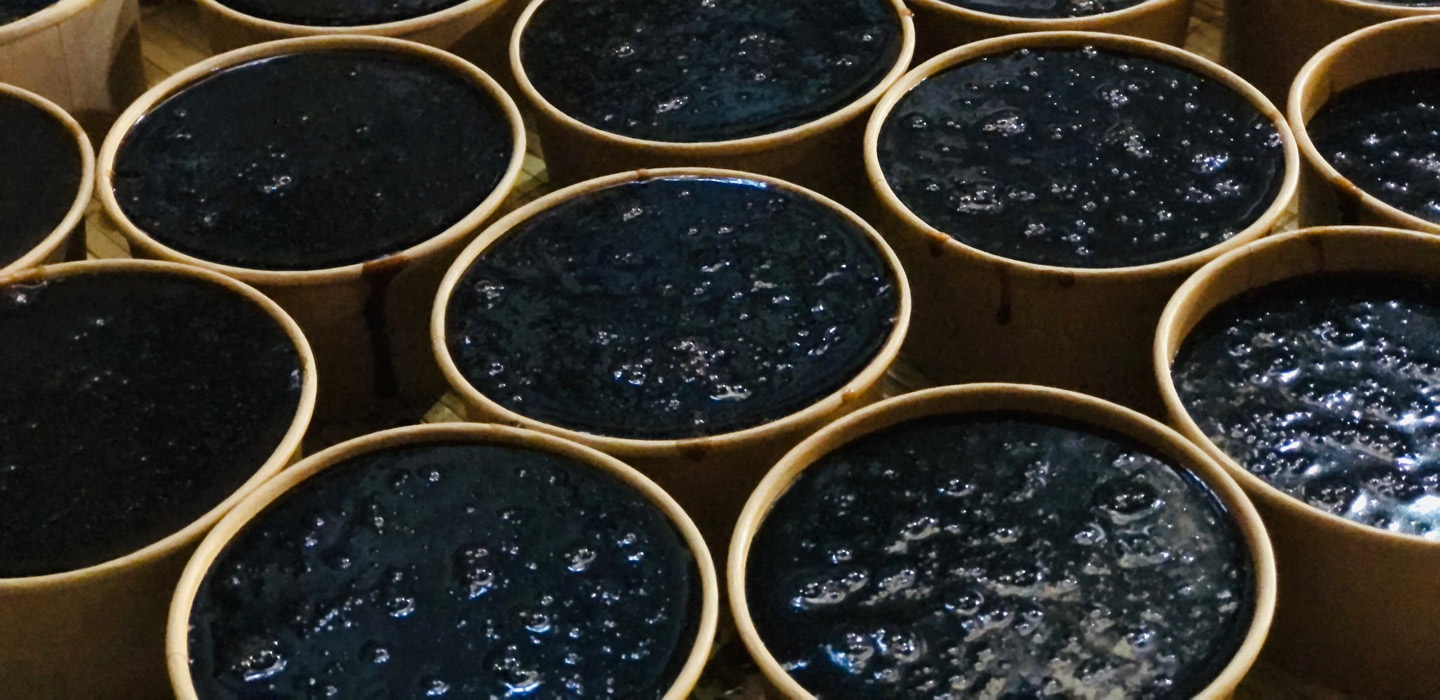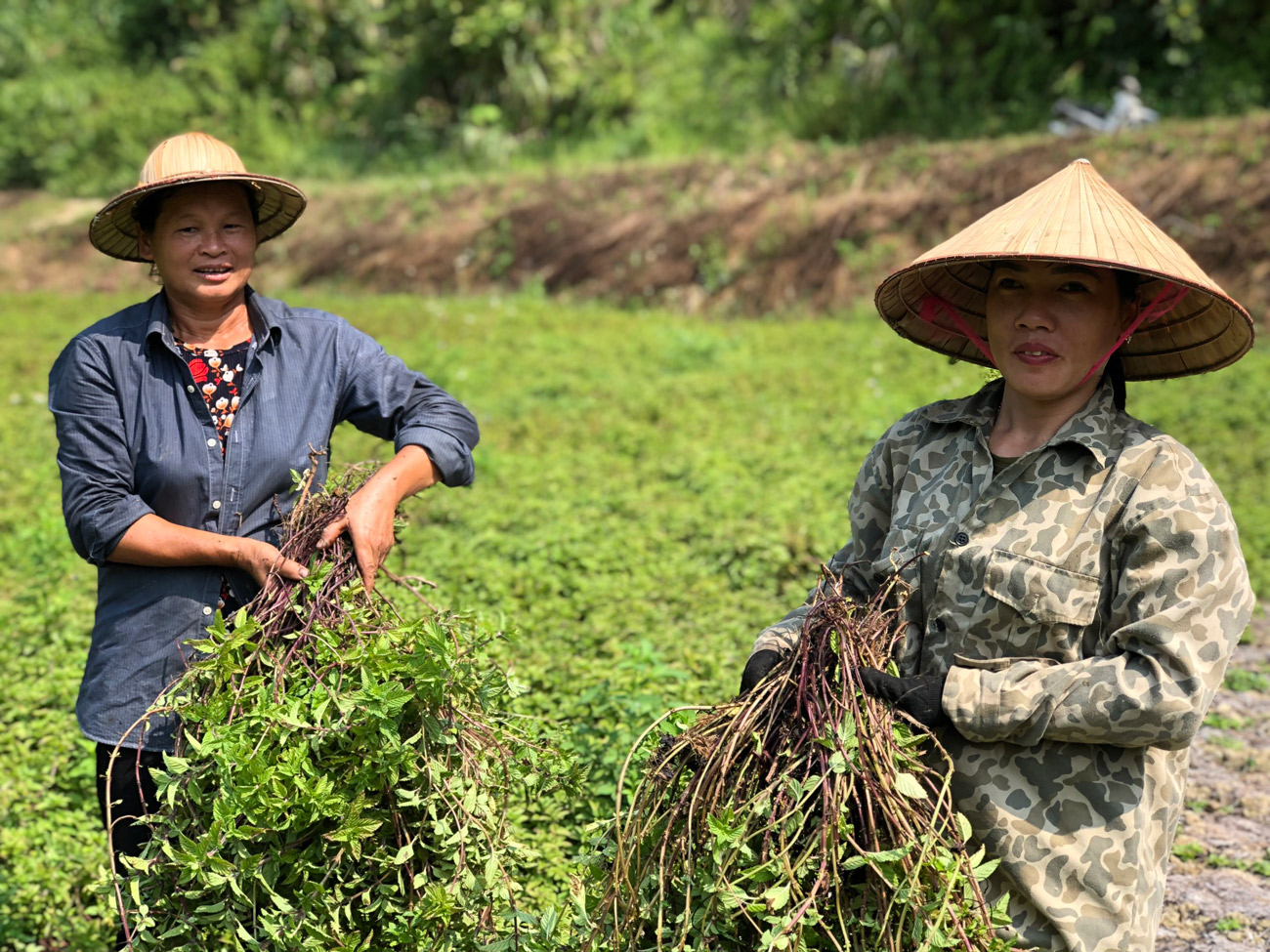Black jelly brings a more resilient future for rural Viet Nam
IFAD Asset Request Portlet
Asset Publisher
Black jelly brings a more resilient future for rural Viet Nam
Estimated reading time: 4 minutes
Light and refreshing, with a mild, earthy flavour, Vietnamese black jelly is the perfect end-of-summer treat. It’s already enjoyed as a healthy snack throughout Viet Nam and its neighbouring countries – and thanks to the work of local growers and an IFAD-supported project, it’s destined for wider audiences.
The best black jelly comes from Thach An, a mountainous district in Viet Nam’s countryside with a cool, subtropical climate and the perfect soil type for growing the plant that produces it – a close relative of mint.
Thanks to these ideal conditions, Thach An has the potential to charge a high price for their crop. However, until recently, the district’s black jelly was mostly grown on small patches of land by individual farmers. Due to the variability among these small quantities, the district’s growers often couldn’t meet stringent market requirements, and their produce was often sold in small batches, via unofficial channels, for a low price.
The effects of the COVID-19 pandemic have taken their toll as well. Extended lockdowns and movement restrictions have blocked the district’s producers from accessing markets, and reductions in cross-border trade have further hampered export opportunities.
Nevertheless, black jelly has enormous economic potential. Beyond its popularity as a dessert, it is also used in the food processing, beverage, cosmetics, and pharmaceutical industries. For all these reasons, district authorities have recently begun efforts to scale up the region’s black jelly production. They’re working in partnership with the IFAD-supported CSSP project to make black jelly a feature of their local economic development efforts.
Focusing on the farmers: The growth of small-scale businesses
Like previous IFAD-supported initiatives in the area, the CSSP is focused on developing businesses throughout rural Viet Nam and revitalizing degraded areas of the local environment. Early on, the project recognized the black jelly plant’s potential both as a cash crop and as a key contributor to restoration efforts.
The project taught local small-scale growers how to grow black jelly plants in new conditions – for example, on sloped lands with limited water. It also offered trainings on other topics, including seedbed preparation and the best techniques for harvesting and drying the plants. And it established common interest groups (CIGs) as a way for growers to exchange information and access financial support to expand their operations.
Ms Hoang is one of these growers. In 2016, she began growing black jelly plants on just one hectare of land. Her output was small and unstable, and she was only able to bring in 8–10 million Vietnamese dong (about US$350–440) per year. So, as she says, “I didn’t pay much attention to growing it.” Like many other growers, she concentrated on her rice and corn crops instead.
She joined the project in 2018. In addition to learning new cultivation practices, she and her fellow CIG members were able to increase their growing area to a total of 2.5 hectares. This enhanced productivity has raised their income five-fold, and they can now sell their harvest collectively, ensuring more stable outputs.
Ms. Hoang is now able to harvest two crops of black jelly plants instead of just one. Her plants now produce about 10 tonnes of dried jelly per year, earning her about 125 million VND (US$5,430) annually. At these prices, black jelly is much more profitable than her staple crops, and it’s been her family’s main source of income for the last two years.
 |
| Ms. Hoang and a fellow farmer harvest black jelly plants from their fields. © Hoang Pham |
Setting up a sustainable future
Ms. Hoang’s story is similar to those of many other growers in the district. As of 2021, Thach An has a total of 360 hectares of black jelly plants, yielding 2,000 tons of jelly annually at a value of US$4 million. Given this success, the CSSP has been working with district authorities to develop a black jelly processing industry throughout the greater province.
The first step was ensuring access. The area had always been difficult to reach, and during the pandemic, movement restrictions had made it impossible for merchants to reach the district’s villages and for farmers to access markets. But thanks to funding from the CSSP, the district was able to construct a new main road.
Another key component is establishing local processing facilities. Currently, much of the district’s crop is sold as raw leaves, which are sent elsewhere for processing into jelly. Opening processing facilities within the district would allow them to sell the finished product at a higher price, thus increasing their profits, and would create local jobs at other points along the value chain. CSSP is actively working to attract investment, especially from private investors, to get these plans off the ground.
District authorities recently completed another milestone: establishing a brand. In June 2020, the Ministry of Science and Technology officially recognized Thach An black jelly as a commercial brand and granted the district a certified trademark. Beyond allowing the district’s black jelly to formally enter the market, the certification confirms the recognition and trust the district has earned.
Perhaps most importantly, local authorities have established a formal international trade channel. In December 2020, with the support of the CSSP, the agricultural ministries of China and Viet Nam signed a trade protocol for black jelly via teleconference. This agreement ensures regular exports of black jelly from Thach An’s province to China, free of any barriers or obstacles, including those created by the pandemic.
Despite the uncertainties of the post-COVID future, the hard work of Thach An’s farmers is paying off, and the district’s future is looking brighter than ever.
Learn more about IFAD’s work in Viet Nam.
Publication date: 07 September 2021